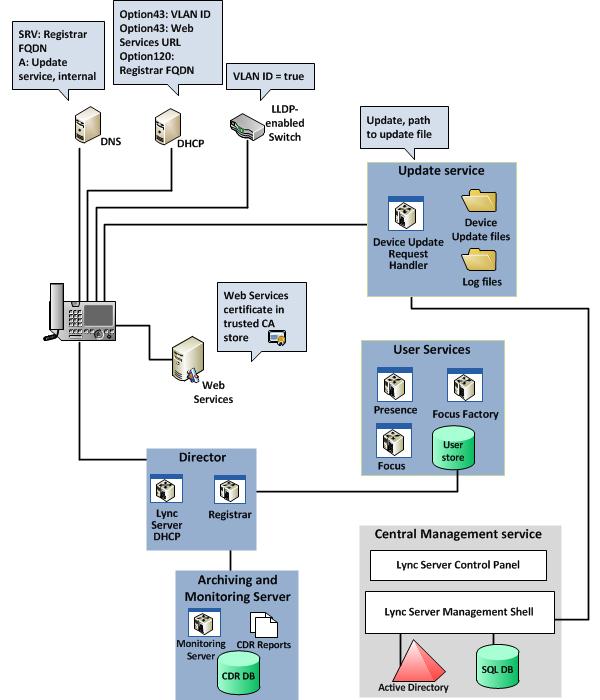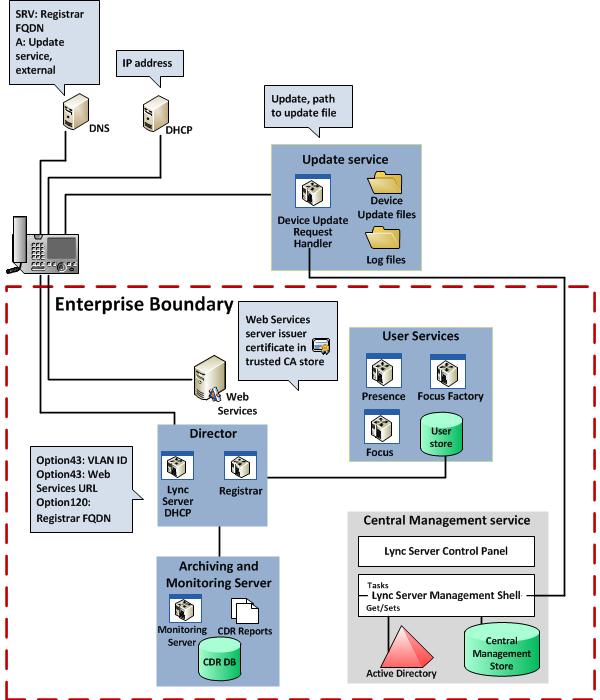Topic Last Modified: 2011-05-04
This section provides an overview of the connectivity process, and explains the differences between how a device connects in an internal and external network.
Microsoft Lync Server 2010 provides a few different devices that connect to the server differently, the Polycom CX700, CX600, and the Aastra 6725ip. When troubleshooting connectivity issues along with other problems that may come up, it is important to understand how each device works and how they connects to Lync Server 2010.
The following diagram describes all the components involved in device connectivity within the corporate environment. For details about the connection process, see Device Connection Process.

 Note: Note: |
|---|
| The previous figure is a logical representation, not a physical overview. For example, Active Directory Domain Services (AD DS) is rarely located on the same machine as any Lync Server 2010 components. The user store can be located on the Back End Server, or on the Archiving and Monitoring Servers. The Lync Server Management Shell, web server and update services are all part of the Front End Server role. |
The following diagram provides an overview of the components involved when the device is located outside the corporate network.

 Note: Note: |
|---|
| The Device Update Web service provides an external and internal website, but only the external one is shown here.The location of the Registrar and the URL of the Device Update Web service for the organization must be published in DNS if external access is to be enabled.Additionally, the Edge Server must be deployed and correctly configured to allow external communications from the device to the corporate environment and back. This is omitted from the previous diagram because Edge deployment is not specific to device connectivity. |

